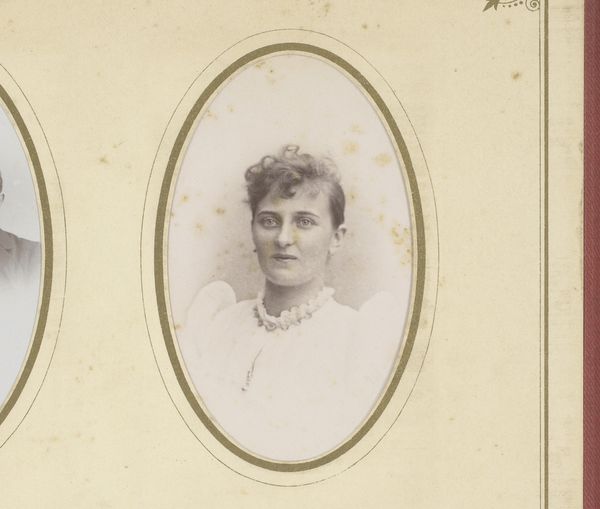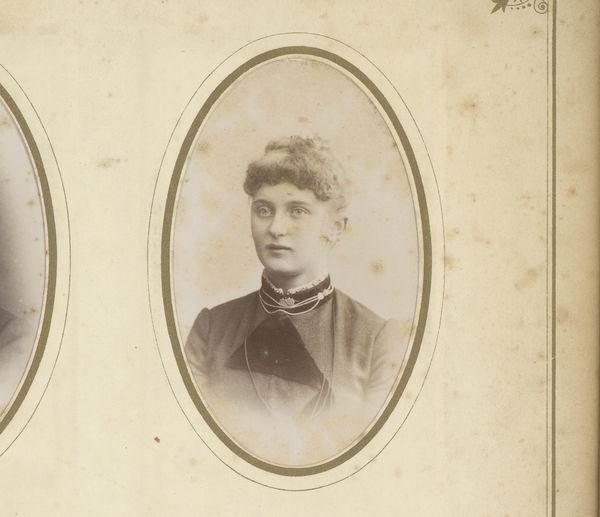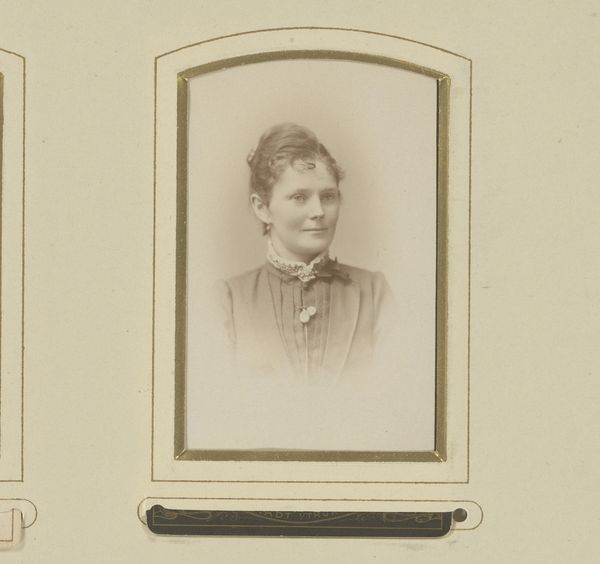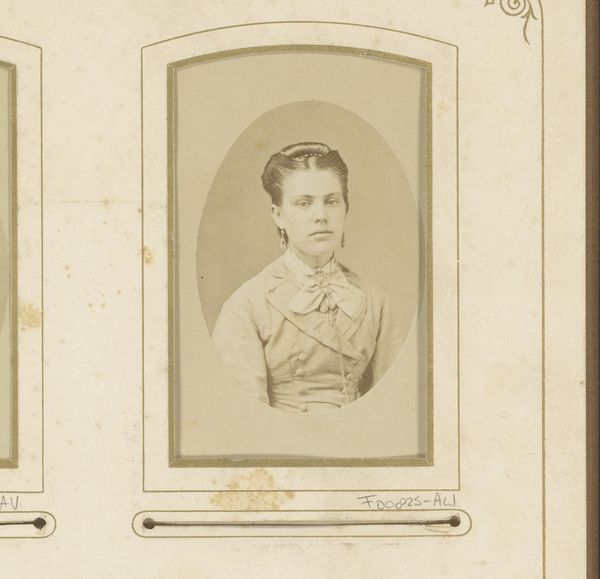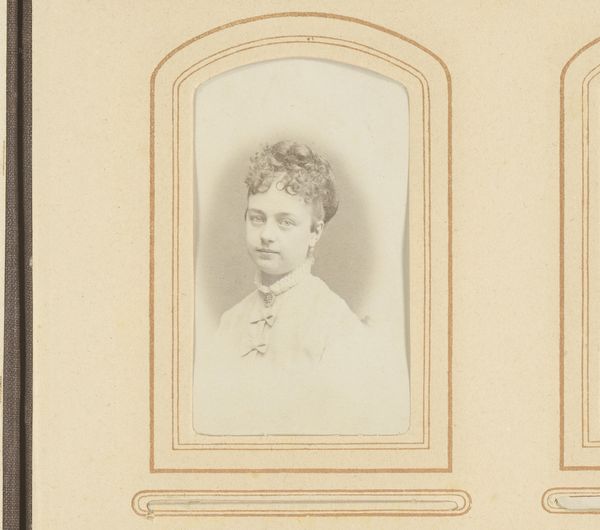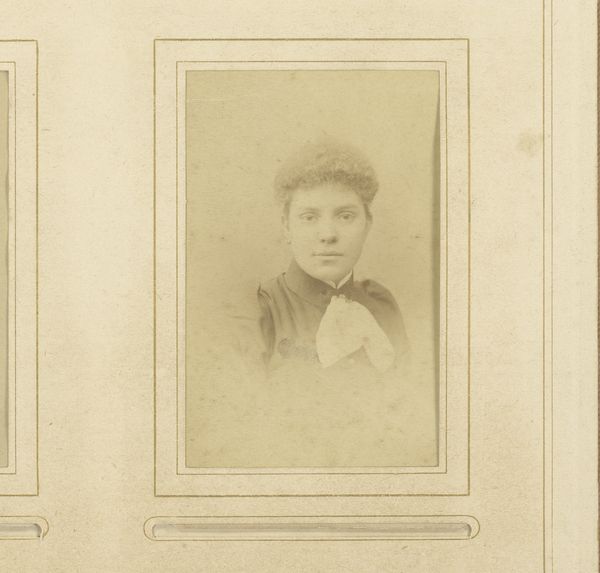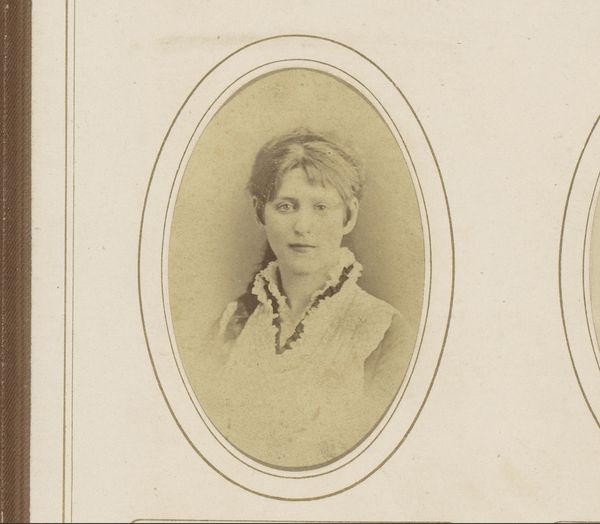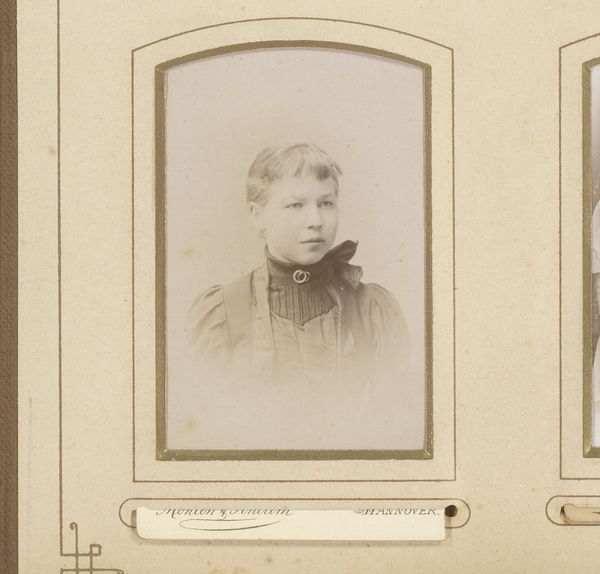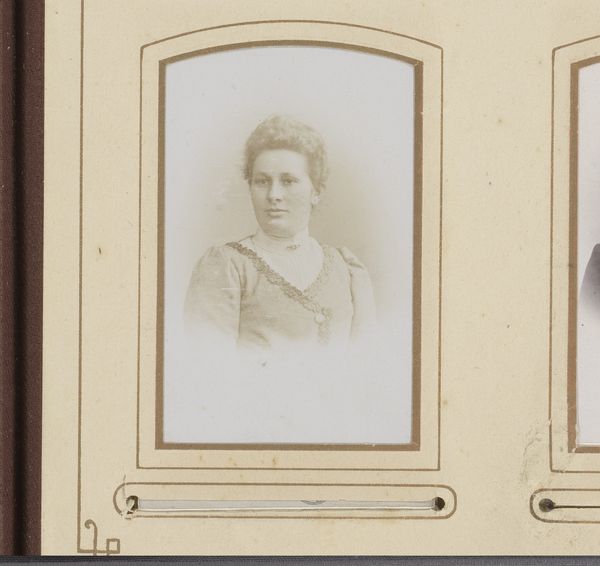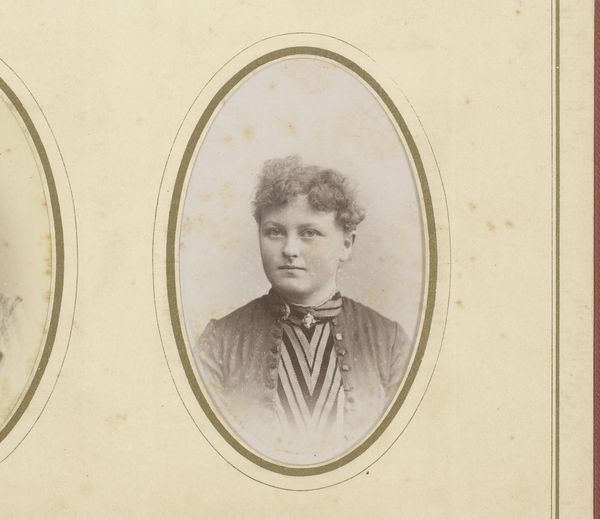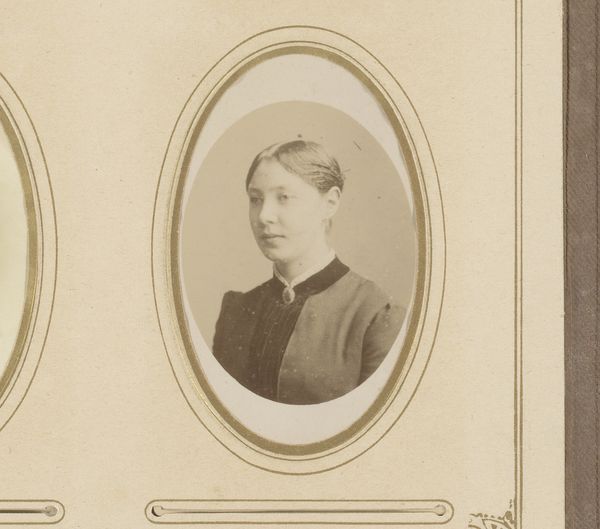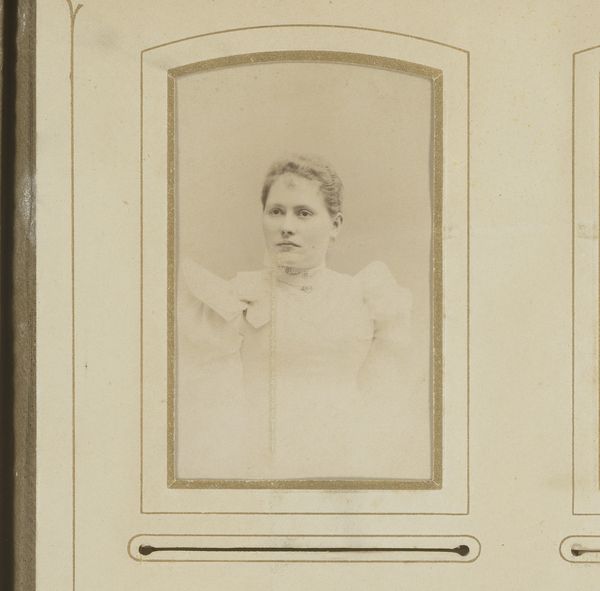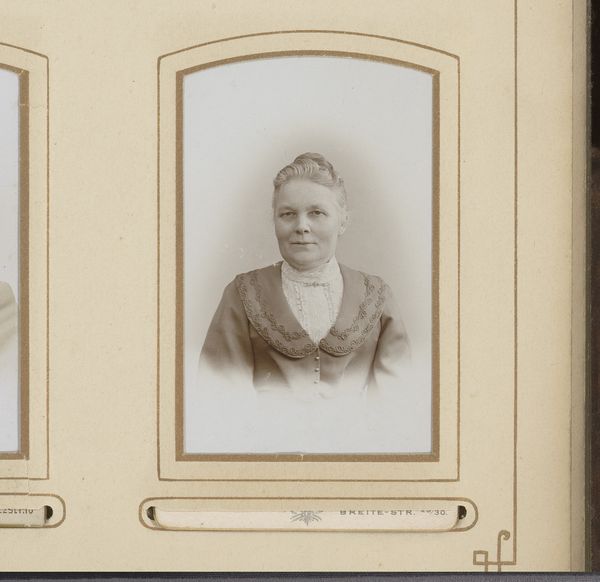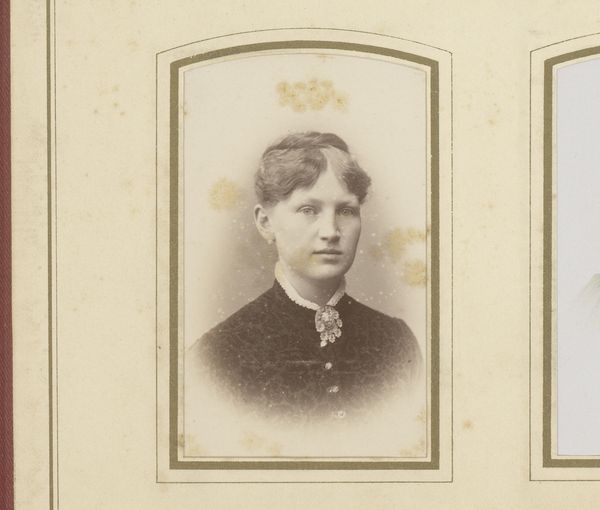
photography
#
portrait
#
photography
Dimensions: height 82 mm, width 53 mm
Copyright: Rijks Museum: Open Domain
Curator: The portrait before us, simply titled "Portret van een Meisje" or "Portrait of a Girl," was created by Erwin Hanfstaengl sometime between 1852 and 1904. It's a photograph, that ghostly medium of the late 19th century. Editor: My immediate impression is one of understated elegance. The tonal range is so delicate, almost monochromatic, giving it a subdued, ethereal feel. You can almost feel the smooth texture of the emulsion on the photograph. Curator: Precisely. Think about the symbols and the expectations for women at this time: quiet demeanor, fair dress, perfect health, innocence. This style of portraiture immortalized in many cases women from rich families as emblems of the period's beliefs. It presents a subtle projection of the idealized young woman in fin-de-siècle society. Editor: What I find compelling is that photography democratized portraiture, somewhat. While previously only the wealthy could afford painted portraits, photography offered a new, relatively affordable way to capture likeness. You begin to ask: how much labor went into producing this photographic card? Who was working in Hanfstaengl's studio printing these? This material reality often disappears from traditional readings. Curator: I agree that it did in certain ways provide an ability to represent oneself. It captured a specific cultural expectation that extended from upper to middle-class societies; there's also a visual legacy in the careful composure of the girl and her attire. And while mass production does come in due time, for the moment portrait photography was an intricate and precious commodity. Editor: Absolutely. Think about the chemistry involved, the specialized equipment, the labor to coat and sensitize plates. The photograph isn't just an image; it's an object laden with social and economic meaning and historical significance. Curator: Thinking about cultural and artistic developments over time, the visual weight, this photograph becomes quite expressive. To whom was she hoping to communicate something? How has it come down to us? Editor: Viewing beyond the final image leads me to respect this anonymous woman not just as a portrait subject, but to really see her. Thanks for a thorough look at this captivating study, its implications of material as social identity, and how art preserves its memory across time.
Comments
No comments
Be the first to comment and join the conversation on the ultimate creative platform.
